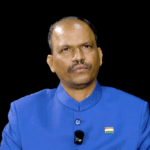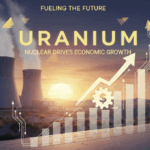The Fourth Industrial Revolution is in full swing, with rapid advancements in information and communication technologies driving humanity into a digital transition. To discuss the changes, opportunities, and challenges this transition brings to Mongolia, international and domestic scholars, researchers, policymakers, and major industry players gathered in Ulaanbaatar at the beginning of September. During this “Blue Sky Dialogue,” participants explored how Mongolia—a nomadic, landlocked nation—can harness digital opportunities to leapfrog into rapid development.
“Mongolia’s government’s first priority is digitalization (digital first). Only through digitalization can public administration become efficient and accountable. Since 2020, 1260 government services have been digitized through platforms such as e-Mongolia and e-Business,” noted N. Uchral, Deputy Prime Minister and Minister of Economy and Development, in his opening speech. Today, more than 1.7 million Mongolians—over half the population—access public services digitally, removing bureaucratic hurdles between herders in remote areas and government officials. Tasks that once required long trips to the capital, such as applying for a passport or registering a business, can now be completed with just a few taps on a phone screen.
Mongolia is endowed with vast reserves of rare earth elements and lithium—critical raw materials that power everything from smartphones to electric vehicles. A fascinating paradox of the digital age is that a country supplying the world with the building blocks of technology now has the opportunity to become a key participant in the innovation ecosystems built from those very materials. According to Minister of Mining and Heavy Industry G. Damdinnyam, digital transformation is likely to first penetrate the mining sector, which has long been the “engine of Mongolia’s development.”
Dan Walker, Global Head of Innovation at Rio Tinto, remarked that “technology is redefining mining,” adding, “The Oyu Tolgoi mine is a clear example of how technology can transform mining operations.” This transformation is extending beyond the mine gates, impacting Mongolia’s economy at large and driving demand for digital skills that the country is striving to cultivate. Rio Tinto has established a Global Technical Center in Ulaanbaatar to support its global mining operations while employing young Mongolians.
In Australia’s deserts, massive autonomous trucks operate without drivers, while driverless trains load and unload ore with no human intervention—all remotely controlled from over 2,000 kilometers away. Such innovations are fast approaching Mongolia’s mining sector. B.Battulga, an engineer at Google, explained that Oyu Tolgoi contains over 300 kilometers of tunnels, where every machine, worker action, and environmental variable is monitored and logged, providing Mongolia with the real foundations to develop world-class technological integration in mining.
Representatives from Plug and Play Japan shared insights from their accelerator ecosystem, which has supported hundreds of startups worldwide. Major Mongolian companies are seeking collaborations with Japanese startups in fields ranging from aviation to advanced materials, building new bridges between Mongolia’s natural resources and Japan’s innovation capabilities.
Microsoft for Startups, representing global technology giants providing infrastructure, emphasized that a country like Mongolia—where connectivity and creativity reach even the most remote corners—has the potential to transform into an innovation laboratory.
Yet, Mongolia’s digital opportunities are coupled with significant challenges. With the world’s 17th largest territory but one of the lowest population densities, only 23% of its land is currently covered by fiber optic networks. This makes a tailored digitalization strategy vital. Since urban infrastructure models cannot simply be replicated in rural steppes, Mongolia must adopt innovative solutions adapted to its unique geography. The existing 52,480 kilometers of fiber optic cable form a foundation, but the real breakthrough lies in technologies that transcend geography, such as satellite connectivity and mobile-centered communication architectures.
Almost simultaneously with the “Blue Sky Dialogue” on Mongolia’s digital future, the UN Development Programme released its report on the country’s readiness for artificial intelligence. It assessed AI preparedness in developing nations across three main dimensions—government support, government use, and ethical understanding—measured by 12 key indicators. Mongolia scored three out of a possible five, placing it in the “emerging system stage.” The government’s support for AI was rated at 3.4, digital service adoption at 3.2, but ethical readiness scored only 2.4.
Additionally, Mongolia ranked 81st out of 100 countries in startup ecosystem development, while in IT education, the student-to-teacher ratio stands at 4,000 to 1. Interestingly, Mongolian women reportedly outperform men by 10.9% in digital skills. According to last year’s AI Readiness Index by Oxford Insights, Mongolia ranked 98th out of 188 countries—an improvement of 11 places compared to 2023.
At this moment of revolutionary change, Mongolia stands at a crossroads. The nation has the chance to shift from a mining-driven economy to a knowledge-based economy. Under the eternal blue sky that has witnessed countless transformations through the centuries, yet another revolution is beginning to unfold. Mongolia can only succeed in this transition through the right partnerships, investment, and inclusive development.







